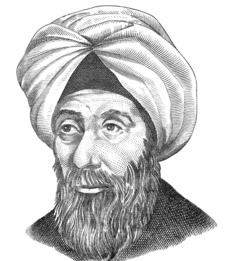Ahmadiyya Times | News Staff | Articles
Source & Credit: Google Knols | Units of knowledge by Zia Shah
By Dr. Zia H. Shah | Upstate, NY
David L. Shenkenberg writes in an article titled, 'Before Newton, there was Alhazen,' for Photonix.com:
"A millennium ago, an Arab scientist authored more than 100 works on optics, astronomy, mathematics and religious philosophy. Although he was arguably one of the greatest scientists of all time, his name is little known to people living in Western countries today. "
If we read all the works of Alhazen, Roger Bacon from 14th century and Sir Isaac Newton side by side, we may realize that a lot of work attributed to Sir Isaac Newton truly belongs to Alhazen. The paradigm of two civilizations, arising from the politics of crusades, deprived Alhazen of these honors. The time is now ripe to begin the study of the works of these three gifted giants, who were standing on the shoulders of prior giants, side by side, to have a better understanding of the history of science.
Alhazen also described the refraction and the dispersion of light into its component colors, ideas credited to Isaac Newton. “Certainly in the field of optics, Newton himself stood on the shoulders of a giant who lived 700 years earlier,” said Jim Al-Khalili, a physics professor at the University of Surrey in the UK. Khalili recently narrated “The Empire of Reason,” a BBC program on Alhazen that is part of a three-part series on medieval Islamic scientists.
Nobel Laureate in physics, Dr. Abdus Salam wrote:
"Ibn-al-Haitham (Alhazen, 965–1039 CE) was one of the greatest physicists of all time. He made experimental contributions of the highest order in optics. He enunciated that a ray of light, in passing through a medium, takes the path which is the easier and 'quicker'. In this he was anticipating Fermat's Principle of Least Time by many centuries. He enunciated the law of inertia, later to become Newton's first law of motion. Part V of Roger Bacon's "Opus Majus" is practically an annotation to Ibn al Haitham's Optics."
The punch line here is, 'Part V of Roger Bacon's "Opus Majus" is practically an annotation to Ibn al Haitham's Optics.' This is the theme of this knol to demonstrate a smooth transition of science from the Muslim era to European renaissance. [... more]
Read the original complete article here: Alhazen: the Father of Optics and the First Scientist
Dr. Zia Shah practices Critical Care Medicine, Pulmonary Medicine, Sleep Medicine and Internal Medicine in Upstate, New York. Dr. Shah graduated with an MD 25 years ago. He is a member of The Muslim Sunrise masthead [http://www.muslimsunrise.com/] and the editor of Alislam - eGazette [www.alislam.org/egazette]. Dr. Shah is the editor of his very popular Google Knol representing Islam-Ahmadiyya perspective.












Brilliant article. I need to do some more research on this topic. I feel like I've been missing out. Jazakallah for posting this.
ReplyDelete